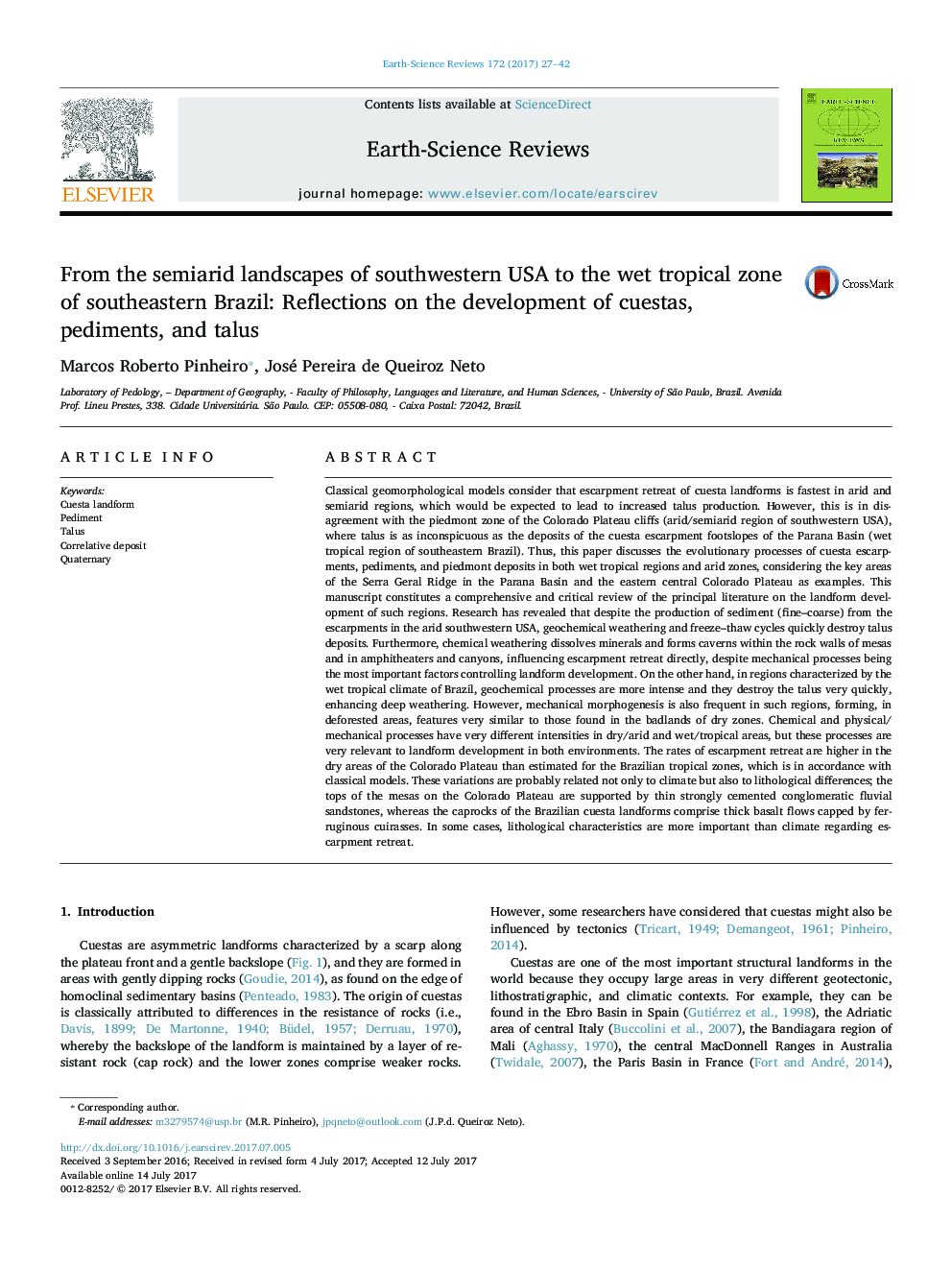| کد مقاله | کد نشریه | سال انتشار | مقاله انگلیسی | نسخه تمام متن |
|---|---|---|---|---|
| 5785026 | 1639930 | 2017 | 16 صفحه PDF | دانلود رایگان |
Classical geomorphological models consider that escarpment retreat of cuesta landforms is fastest in arid and semiarid regions, which would be expected to lead to increased talus production. However, this is in disagreement with the piedmont zone of the Colorado Plateau cliffs (arid/semiarid region of southwestern USA), where talus is as inconspicuous as the deposits of the cuesta escarpment footslopes of the Parana Basin (wet tropical region of southeastern Brazil). Thus, this paper discusses the evolutionary processes of cuesta escarpments, pediments, and piedmont deposits in both wet tropical regions and arid zones, considering the key areas of the Serra Geral Ridge in the Parana Basin and the eastern central Colorado Plateau as examples. This manuscript constitutes a comprehensive and critical review of the principal literature on the landform development of such regions. Research has revealed that despite the production of sediment (fine-coarse) from the escarpments in the arid southwestern USA, geochemical weathering and freeze-thaw cycles quickly destroy talus deposits. Furthermore, chemical weathering dissolves minerals and forms caverns within the rock walls of mesas and in amphitheaters and canyons, influencing escarpment retreat directly, despite mechanical processes being the most important factors controlling landform development. On the other hand, in regions characterized by the wet tropical climate of Brazil, geochemical processes are more intense and they destroy the talus very quickly, enhancing deep weathering. However, mechanical morphogenesis is also frequent in such regions, forming, in deforested areas, features very similar to those found in the badlands of dry zones. Chemical and physical/mechanical processes have very different intensities in dry/arid and wet/tropical areas, but these processes are very relevant to landform development in both environments. The rates of escarpment retreat are higher in the dry areas of the Colorado Plateau than estimated for the Brazilian tropical zones, which is in accordance with classical models. These variations are probably related not only to climate but also to lithological differences; the tops of the mesas on the Colorado Plateau are supported by thin strongly cemented conglomeratic fluvial sandstones, whereas the caprocks of the Brazilian cuesta landforms comprise thick basalt flows capped by ferruginous cuirasses. In some cases, lithological characteristics are more important than climate regarding escarpment retreat.
Journal: Earth-Science Reviews - Volume 172, September 2017, Pages 27-42
